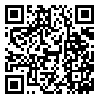BibTeX | RIS | EndNote | Medlars | ProCite | Reference Manager | RefWorks
Send citation to:
URL: http://payavard.tums.ac.ir/article-1-5818-en.html

 , Sasan Rezaei2
, Sasan Rezaei2 
 , Farshad Hashemi3
, Farshad Hashemi3 
 , Mahdi Zareei4
, Mahdi Zareei4 
 , Hoda Deli5
, Hoda Deli5 
 , Seyed Jamal Hashemi *
, Seyed Jamal Hashemi * 
 6
6
2- Professor, Parasitology & Medical Mycology Department, School of Public Health and Institute of Public Health Research, Tehran University of Medical Sciences, Tehran, Iran
3- Pharmacy Student, School of Pharmacy, Tehran University of Medical Sciences, Tehran, Iran
4- Ph.d Student in Medical Mycology, School of Medical Sciences, Tarbiat Moddares University, Tehran, Iran
5- Master of Science Student in Medical Mycology, School of Public Health and Institute of Public Health Research, Tehran University of Medical Sciences, Tehran, Iran
6- Professor, Food Microbiology Research Center, Tehran University of Medical Sciences, Tehran, Iran ,
Background and Aim: Onychomycosis or nail fungus infection has an increasing prevalence with many effects on patients’ social life and mental health dermatophytes, yeasts and non-dermatophyte molds are among the best known agents of fungal infections of nails. The purpose of this study was to determine the prevalence of non-dermatophyte molds using morphological (direct examination and culture) and molecular (PCR) methods in patients referring to Medical Sciences Mycology Laboratory in Tehran, Iran.
Materials and Methods: In this study, samples were taken from 170 patients. For direct microscopic examination (DME), 15% KOH solution was used for the culture of samples, Sabouraud dextrose agar media (S) was applied together with chloramphenicol (SC) and chloramphenicol and cycloheximide (SCC). Meanwhile, differential tests were done for mycological diagnosis (slide culture), and 28SrDNA amplification and sequencing were performed for suspect or unknown samples.
Results: Of the 170 patients, 74 cases (43.5%) had onychomycosis, of which 53 cases (71.62%) were female and 21 cases (28.38%) were male. Also, of the 74 cases of onychomycosis, 40 cases (54.05%) were reported candidiasis, 21 cases (28.37%) non-dermatophyte molds, and 12 cases (16.21 %) dermatophytes.
Conclusion: The prevalence of onychomycosis in this study was 43.5% and the application of polymerase chain reaction (PCR) technique in cases of false positive, false negative and long-term culture was valuable meanwhile, given that all the samples that had positive results in DME with negative cultures were positive in molecular tests, this study reveals the power of molecular techniques compared with culture method.
| Rights and permissions | |
 |
This work is licensed under a Creative Commons Attribution-NonCommercial 4.0 International License. |



